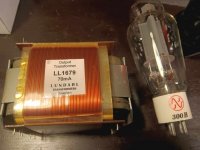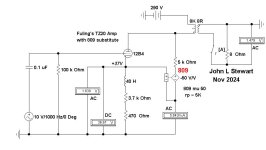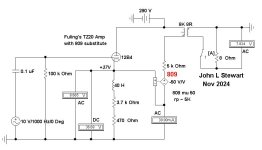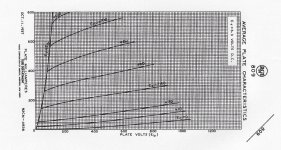More "nuttiness" waiting for its turn:

I've been collecting parts for this one for some time now and the OPTs arrived today. Not much decided regarding the circuit yet though, I'm still stuck like a donkey between two haystacks whether to go for an "artistic" or an engineering" approach. I have a few different interstage transformers on the shelves that I'm tempted to use in a thirties-style topology, on the other hand a more modern approach using a single high gm pentode or a CCS-loaded high mu triode might be better.

I've been collecting parts for this one for some time now and the OPTs arrived today. Not much decided regarding the circuit yet though, I'm still stuck like a donkey between two haystacks whether to go for an "artistic" or an engineering" approach. I have a few different interstage transformers on the shelves that I'm tempted to use in a thirties-style topology, on the other hand a more modern approach using a single high gm pentode or a CCS-loaded high mu triode might be better.
In these Sims I've used the RCA 809 as the final tube, The published mu is 50.
The rp can estimated from the slope of the curves on the plate family graph at ~5K.
By using the sub of inverting voltage controlled voltage source the DC conditions are avoided.
No problem with +ve control grid biasing. It is the AC conditions that are required.
The DC can be estimated from the plate curves later.
So three conditions in this series of Sims, The composite tube of 12B4 & 809,
as a triode, with 50% UL & as a pentode. The gain of the 12B4 drops as local NFB is increased.
NFB controls the gain of the stage it is applied to, in this example the plate of the 12B4.
The rp can estimated from the slope of the curves on the plate family graph at ~5K.
By using the sub of inverting voltage controlled voltage source the DC conditions are avoided.
No problem with +ve control grid biasing. It is the AC conditions that are required.
The DC can be estimated from the plate curves later.
So three conditions in this series of Sims, The composite tube of 12B4 & 809,
as a triode, with 50% UL & as a pentode. The gain of the 12B4 drops as local NFB is increased.
NFB controls the gain of the stage it is applied to, in this example the plate of the 12B4.
Attachments
Excellent, thanks!
It seems here that the gain reduction at full NFB is over 5 times, while I seem to remember that the measured difference was just over 2 times.
I'll run more bench tests when I have the power supply running again, it's currently being moved from the breadboard to a nice teak box.
It seems here that the gain reduction at full NFB is over 5 times, while I seem to remember that the measured difference was just over 2 times.
I'll run more bench tests when I have the power supply running again, it's currently being moved from the breadboard to a nice teak box.



